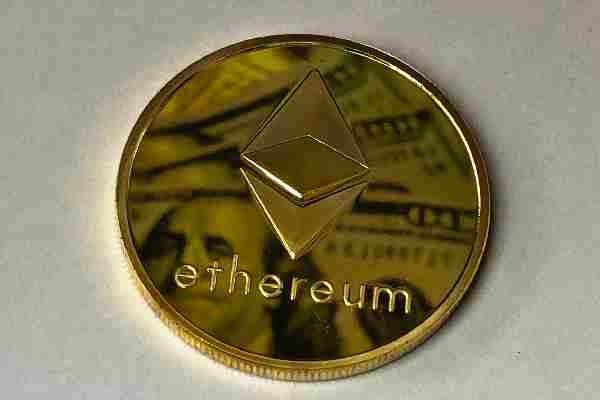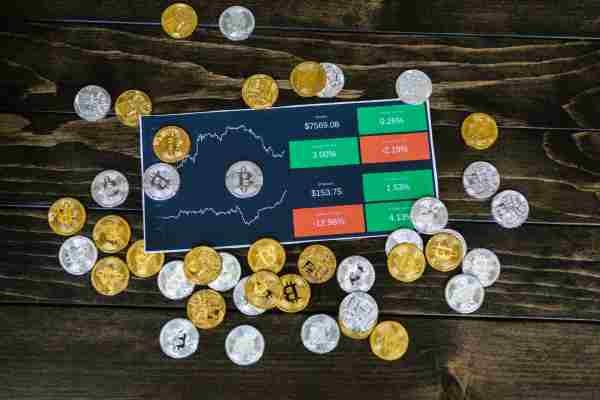Ethereum, which was launched in 2015, is the second-largest cryptocurrency by market cap after Bitcoin. Be that as it may, dissimilar to Bitcoin, Ethereum was not meant to be a digital currency.
All things being equal, Ethereum’s founders set off on a mission to build another sort of worldwide, decentralised computing platform that takes the security and transparency of blockchains and extends out those credits to a huge scope of utilizations.
Everything from monetary tools and games to complex databases are now running on the Ethereum blockchain. What’s more, its future potential is just restricted by developers’ imagination.
As the not-for-profit Ethereum Establishment puts it: “Ethereum can be used to classify, decentralise, secure and trade pretty much anything.”
- Ethereum has become a famous investment mode and store of wealth (and can be used, as Bitcoin, to send or get value without a mediator).
- The Ethereum blockchain permits the developers to build and run a huge assortment of uses: all that from games and high level databases to complex decentralised monetary tools — implying that they do not need a bank or some other institution in the middle.
- Ethereum-based applications are made using “smart contracts.” Smart contracts, similar to the paper contracts, lay out the conditions of a plan between parties. However, dissimilar to a dated contract, smart contracts consequently execute when the terms are addressed without the requirement for either partaking party to know who is on the opposite end of the bargain — and without the requirement for any sort of middle person.
- Ethereum, as Bitcoin, is an open source project that isn’t owned or worked by a solitary person. Anybody with an internet association can run an Ethereum node or interface with the network.
- Similar as Bitcoin’s decentralised blockchain permits any two strangers, anyplace on the planet, to send or get money without a bank in the middle, smart contracts running on Ethereum’s decentralised blockchain permit developers to construct complex applications that ought to run precisely as modified without downtime, control, misrepresentation, or third party interference.
Famous Ethereum-based innovations include stablecoins (like DAI, which has its value fixed to the dollar by smart contract), decentralised finance applications (aggregately known as DeFi), and other decentralised applications (or Dapps).
What’s The Difference Between Ethereum, Ether, and ETH?
Contents
Ethereum is the name of the network. “Ether” is the local cryptocurrency token used by the Ethereum network. All things considered, in everyday use a great many people refer to the token as “ETH” (or just “Ethereum”).
As an approach to sending, getting, or putting away worth ETH works similar to Bitcoin. Yet, it likewise plays an exceptional part on the Ethereum network. Since clients pay expenses in ETH to execute smart contracts, you can consider it the fuel that keeps the entire situation running (which is the reason those charges are classified “gas”).
On the off chance that Bitcoin is “digital gold,” ETH can be viewed as “digital oil.”
Is Ethereum Secure?
ETH is right now gotten by the Ethereum blockchain similarly Bitcoin is gotten by its blockchain. A huge amount of computing power — contributed by every one of the computers on the network — confirms and gets each transaction, making it basically impossible for any outsider to meddle.
The central thoughts behind cryptocurrencies assist with making them safe: the systems are permissionless and the core software is open-source, meaning endless computer researchers and cryptographers have had the option to examine all parts of the networks and their security.
Applications running on the Ethereum blockchain, notwithstanding, are simply destined to be basically as secure as their designers have made them.
For instance, code can at times contain bugs that could bring about loss of funds. While their source code is likewise noticeable to all, the client bases of every individual application are a lot more modest than Ethereum’s in general, thus less eyes are on them. It is essential to investigate any decentralised application you intend to use.
The Ethereum convention is right now being refreshed in ways that are planned to make it quicker and, surprisingly, safer.
How Does Ethereum Work?
You could have heard that the Bitcoin blockchain is a ton like a bank’s record, or even a chequebook. It’s a running count of each and every transaction made on the network returning to the earliest reference point — and every one of the computers on the network contribute their computing power towards being crafted by guaranteeing that the count is precise and secure.
The Ethereum blockchain, then again, is more similar to a computer: while it likewise accomplishes by recording and getting transactions, it’s substantially more adaptable than the Bitcoin blockchain.
Developers can utilize the Ethereum blockchain to fabricate a huge assortment of tools — everything from planned operations, the executives software to games to the whole universe of DeFi applications (which range from loaning, acquiring, trading, and that’s only the tip of the iceberg).

Ethereum uses a ‘virtual machine’ to accomplish this, which resembles a giant, global computer made of numerous singular computers running the Ethereum software. Keeping those computers showing includes investment in both equipment and power to members. To take care of those expenses, the network uses its own Bitcoin-like cryptocurrency called Ether (or, all the more regularly, ETH).
ETH keeps the situation running. You cooperate with the Ethereum network by using ETH to pay the network to execute smart contracts. Subsequently, the charges paid in ETH are designated “gas.”
Gas rates change contingent upon how occupied the network is. Another version of the Ethereum blockchain called Ethereum 2.0, which means to increment proficiency, started carrying out in December 2020.
What is Ethereum 2.0?
Ethereum 2.0 (frequently alluded to as ETH2) is a significant move up to the Ethereum network. It is intended to permit the Ethereum network to develop while expanding security, speed, and efficiency.
As of mid 2021, Ethereum 2.0 and Ethereum 1.0 exist next to each other — yet the first blockchain will ultimately converge with ETH2 blockchain.
Why is Ethereum 2.0 Important?
Moving a famous crypto asset to another platform is a complex undertaking, yet for Ethereum to scale and develop, it requires work out. That is on the grounds that the “Proof of Work ” process used by the ETH 1.0 blockchain to verify transactions causes bottlenecks, increments charges, and consumes significant resources (especially power).
What is Proof of Work?
How do cryptocurrency networks make sure that no one spends a similar amount of money two times without a central power like Visa or Paypal in the middle? They use a consensus mechanism. At the point when ETH 1.0 was launched, it embraced the consensus mechanism spearheaded by Bitcoin: the suitably named Proof of Work.
Proof of Work requires a huge amount of processing power, which is contributed by virtual “miners” all over the planet who contend to be quick to settle a tedious mathematical puzzle.
The winner gets to update the blockchain with the most recent checked transactions, and is compensated with a predetermined amount of ETH.
This process happens at regular intervals (contrasted with Bitcoin’s roughly 10-minute cadence). As traffic on the network has increased, the limits of Proof of Work have caused bottlenecks during which charges spike eccentrically.
How Can You Purchase Ethereum?
Any way you get your ETH, you’ll have to figure out a couple of fundamental ideas. Each location on the Ethereum network is given a public key and a private key, and you’ll require a wallet to deal with your crypto property.
Public Key:
Consider this the crypto adaptation of an email address. Your Ethereum public key is where people can send you ETH and Ethereum-based tokens like USDC and Dai. You can securely give this out to other people.
Private Key:
Consider this like your password. You ought to for the most part try not to give this out to individuals. A private key is a long series of letters and numbers. (It can likewise be as a progression of words called a seed expression.) Monitoring your private keys is pivotal. Assuming that you lose them, you lose your Ether for eternity.
Wallet:
To store and get your Ether you’ll require a wallet. In the event that you’re simply beginning, the least demanding choice is to make an account by means of the Coinbase application or coinbase.com — in which case you’ll communicate with a “custodial wallet” that stores and gets your confidential keys for you. As you progress you should explore other wallet choices that are worked for collaborating with decentralized finance (or DeFi) conventions.
What does Ethereum Blockchain do?
Ethereum Blockchain is a decentralized platform that runs smart contracts: applications that run exactly as programmed without any possibility of fraud or third party interference.
What is the difference between Ethereum and Ether?
Ethereum is a decentralized platform that runs smart contracts: applications that run exactly as programmed without any possibility of fraud or third party interference.
Ether is the cryptocurrency used to pay for transaction fees and gas on the Ethereum network.
With that, we have now come to our guide on Ethereum. We hope it helps you in learning the basics of Ethereum.



Reviews